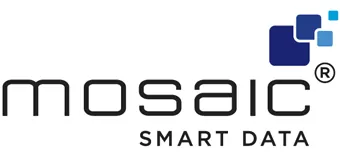Steps Ahead
Diversity in AI. How the technology transcends far more than just the industries it is benefiting.
Diane Castelino, Data Science and Research Lead at Mosaic Smart Data discusses her personal experience in the field of computer science both in education and in industry, and how diversity and inclusion have the capabilities to develop it into a truly global asset.
Forward
Over the past three decades, I have had the privilege to witness Artificial Intelligence (AI) transition from the research lab into our daily lives. The recent exponential increase in computing power together with the availability of a huge wealth of data has enabled machine learning (a subfield of AI) into achieving super-human level accuracy in many areas such as image recognition, machine translation and speech recognition. Technology platform giants such as Google, Facebook, Microsoft, Amazon and Baidu have used AI to completely transform their businesses, leveraging their data from multiple sectors and are currently investing heavily in future research in AI.
Today, AI is driving a wide variety of important applications from diagnosing cancer to sensing and building digital twins of everything from bridges to human organs, thus contributing to a deeper understanding of our world. Glimpsing into the future, AI will be building autonomous services and factories which will not only bring enormous benefits but consequences that society must deal with. Given that AI has this potential to be completely transformative, scaling across every industry, every sector of our economy and every aspect of society, it is vital that the people involved in creating this technology are representative of our society as a whole.
Throughout my career in technology, having spent time in both industry and academia, it is apparent that the field lacks diversity, particularly for the underrepresented. The term underrepresented spans not only gender, race and ethnicity but also socio-economic and geographical background. Ensuring that individuals who understand the technology are representative of society as a whole is proving to be vital in order to mitigate the risk of machine learning algorithms yielding unintentional bias on the basis of race or gender [1], [2]. To address these issues, the last few years have seen the growth of many non-profit organisations focused on inclusivity and diversity in AI and technology [3], [4], [5], [6]. Research is now underway into using AI to detect, analyse, prevent and combat human biases and discrimination [7], [8]. Since 2014, large tech companies have shown their commitment to increasing these numbers and publishing annual diversity reports [9]. Underlining the challenge companies face in recruiting minorities, the percentage of female graduates with core STEM (science, technology, engineering & mathematics) degrees is steadily growing, however, the split is still just 26%. This figure is also translated in the female STEM workforce, with women making up 22%. This shows that some work needs to be done to encourage women to both study these subjects, and transition into the workforce [10]. The purpose of this article is to describe my experiences as a woman in technology. By sharing my journey, I hope to support, encourage and inspire others to feel that this technology is truly exciting and open to everyone, regardless of your identity or background.
Real-world application
For the past six years, I have been working for Mosaic Smart Data, an analytics fintech company at the cutting edge of data science. Mosaic embraces research and innovation, knowing there are mutual benefits to working with universities; Start-ups can draw upon the wealth of expertise and innovation of world-leading academics whilst universities are exposed to the fast-pace and focus of working on real-world commercial problems.
From my perspective, had it not been for continuing research from academia over the last few decades, we would not have the machine learning algorithms that we rely on today. For example, deep learning, convolutional neural networks, recurrent neural networks, reinforcement learning and backpropagation algorithms were all developed in academia over three decades ago. Academia brought these methods into industry, educating the teams behind the world’s leading companies and encouraging the adoption of GPU’s. Thus the importance of research within industry is becoming widely recognised and more prevalent in industry [11], [12], [13]. Keen to stress both the importance and potential of AI to disrupt and transform the financial services industry, I started writing several articles [14], [15], [16].
In 2014, I came across an academic paper that described a class of statistical models designed to capture the behavioural characteristics of non-contractual customers [17], [18]; These were scenarios where companies were unable to directly observe when a customer had defected. This information could then be utilised to model and forecast the expected lifetime value of a customer. This inspired me to take these thirty-year-old statistical models from academic journals and apply them to the real-world settings, taking advantage of both the wealth of data and Python libraries available today. Believing that these models are remarkably effective enabling companies to have a greater understanding of what their customers as individuals are actually worth inspired me to write an article on this topic [19].
Engaging with educational institutions
Mosaic’s collaboration with University College London was initiated in 2014, with Mosaic’s Data Science team mentoring postgraduate students in applying machine learning techniques such as generative adversarial networks and natural language processing to financial problems. Since this time we have also established partnerships with the University of Cambridge, providing technical talks to students such as the application of reinforcement learning to finance. I now hope to create an online Mosaic machine learning lecture series, harnessing the expertise within Mosaic to educate and support students from a wide variety of backgrounds from all over the world.
A strong relationship has formed with the University of Oxford, working alongside Professor Rama Cont, a world-class leader in the field of quantitative finance and who is the Chief Scientific Advisor to Mosaic. Sponsoring conferences on Machine Learning and Finance, and monthly seminars on quantitative finance has attracted a global audience to participate in a discussion on current research in finance [20], [21]. In my opinion, finance can be a particularly challenging application for machine learning due to the risk of misusing mathematical models, the complexities of data handling, overfitting to historical data and adhering to regulatory constraints. Therefore, sharing ideas, particularly with experts in the field, is vital to make progress in this area.
I am currently working on establishing a Research Lab at Mosaic, to provide a development environment for Data Scientists, Academics and Industrial Partners to develop and execute code securely within the Mosaic Environment. My goal is to encourage research in applying machine learning techniques to data; helping financial institutions understand their data through fact-based empirical evidence, rather than judgement and intuition and sharing ideas through publications to promote further research. I want to foster an open, collaborative environment, working with people from different backgrounds, each bringing their unique values and experiences into the company.
Over the last three decades, I have been fascinated to witness the growth of technology at such a rapid pace: products such as personal computers, the Internet, smartphones, cloud computing and graphics processors combined with AI have been completely transformative to a plethora of services. Outside of the technology sector, the financial sector has been the next biggest investor in AI, with fast growth in research and adoption forecasted over the next five years [22].



